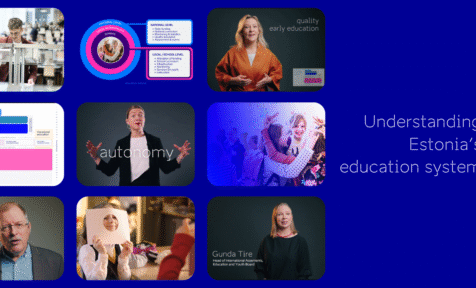Years of focused spending on technology education have demonstrated Estonia’s ability to shape its own future. Programmes such as ProgeTiger, which introduces technology from kindergarten onwards, and the IT Academy in higher and vocational education, demonstrate this capacity. Building on their success, the newly launched Engineering Academy applies the same formula to engineering.
The Engineering Academy directly confronts a long‑standing challenge—the critical shortage of engineers. The scarcity is especially acute in the manufacturing, metal, electronics and construction sectors, hindering economic growth and competitiveness. The problem is compounded by a declining interest in STEM subjects among young people from basic school onwards and a persistent shortage of qualified teachers and lecturers in technical fields.
Collaboration is key
Tackling the engineer shortage at scale requires an effort that reaches every level of education—and society itself. With co‑funding from the European Union, the Estonian state has set up the Engineering Academy, coordinated by the Estonian Education and Youth Board, as a nationwide partnership that unites government, universities, schools, hobby‑education providers, and businesses. By extending from classrooms to university and by aiming to shift public attitudes so that engineering is valued across the country, the initiative shows just how broadly Estonia is willing to act. “Our mission must be that every young Estonian has at least one meaningful encounter with engineering,” says Juta Asuja, programme manager. “That is why we are taking engineering physically into schoolyards – with mobile labs, workshops and factory visits.”
Engineering Academy’s objectives fall into four areas:
1. Popularising the field and attracting talent
Raising awareness about the importance and modern relevance of engineering—including its link to digital and green skills—begins in basic school. For example, “Inspiring Engineering Days” roadshow will visit 18 basic schools, giving more than 3 600 pupils hands‑on workshops with practising engineers. To sustain interest, the programme runs and collaborates popularisation events such as the Robotex girls’ firefighting contest. It also offers preparatory courses that build confidence before formal studies.
This focus is especially important for girls; despite such initiatives, they still make up only 7 per cent of learners in construction fields.
The programme aims to foster a society‑wide appreciation of engineering, financing grassroots initiatives that promote science and technology across Estonia. In spring 2025 the first Open Factories Day saw 13 factories in the Tartu region open their doors to school groups and the wider public, offering a rare close‑up look at modern metal, wood, food and electronics production lines. Together, these initiatives take engineering beyond the classroom and give young people clear pathways into the profession.
2. Modernising curricula and elevating quality of education
New curricula, study directions and modules are being developed to meet evolving labourmarket‑ demands. This addresses significant shortages across a wide range of fields—from road construction and infrastructure to high‑tech defence engineering
Funding supports the creation of digital learning resources and simulationspromoting widespread project‑ and problem‑based learning in collaboration with businesses. Experts and practitioners from industry actively participate in teaching and curriculum development.
The programme emphasises essential skills for future engineers, including advanced digital skills like 3D modelling and data analytics, crucial green skills and a broad range of soft skills like communication, collaboration, problem‑solving, project management, critical thinking and creativity.
3. Empowering teaching staff
Continuous development sits at the core of the Academy’s support for lecturers and vocational teachers. Tailored training keeps experienced staff up to date, while newcomers receive mentoring so they can grow into the role with confidence. Company internships give teachers first-hand industry insight to bring back to the classroom, making lessons more practical and current. At the same time, the programme funds the creation of unified Estonian‑language subject‑specific learning materials.
4. Supporting students and creating flexible learning paths
To reduce dropout rates, the Engineering Academy funds support systems such as mentoring, individual counselling and remedial STEM courses that help first‑year students stay on track. Flexible learning pathways are also being developed so that vocational graduates can progress smoothly into higher education. These modular credentials allow adult learners to gain specific, market‑relevant skills quickly and later stack them towards a full degree when ready.
Taken together, these actions create a coherent roadmap for strengthening Estonia’s engineering capacity. The establishment of the Engineering Academy marks a significant step forward. The groundwork has been laid, and activities are now in full swing. As the programme unfolds, we expect tangible improvements in the quality of engineering education and a growing number of highly skilled professionals ready to contribute to Estonia’s competitiveness. The journey has begun, and we eagerly await the first tangible results.



